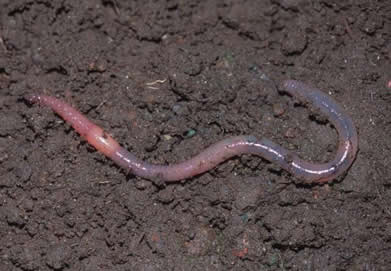

THE Earthworms british columbia

Arctiostrotus vancouverensis, photo by William Leonard.
View the checklist of BC earthworms
Read the Introduction to the Earthworms
Reynolds and Wetzel (2008) provide a checklist of the earthworms of North America, including Mexico, Puerto Rico, Hawaii and Bermuda. They recognize 253 taxa representing 59 genera in 10 families. To date, 24 taxa of earhworms have been identified in British Columbia in 4 families (Acanthodrilidae, Lumbricidae, Octochaetidae and Sparganophillidae) (Marshall and Fender 2007). Eighteen of these are introduced European species, primarily in the Lumbricidae, and four species are native to the province (Bimastos lawrenceae, Arctiostrotus perrieri, Arctiostrotus vancouverensis and Toutellus oregonensis) (Reynolds 2009 pers. comm., McKey-Fender et al. 1994). An additional two taxa, representing the families Octochaetidae and Sparganophillidae, have also been found. However, these were juveniles and not identified to species (Marshall 1977).
Until relatively recently, researchers thought that the earthworm fauna found in Canada was comprised only of alien species introduced from Europe (McKey-Fender et al. 1994). However, research has now shown that native species of earthworms are present in Canada and are species that survived glaciaton in unglaciated regufias on the west coast of the continent--on the Queen Charlotte Islands, Vancouver Island and along the northwest coast of the United States (McKey-Fender et al. 1994). Researchers have termed these native earthworms 'ancient earthworms'' (Marshall and Fender 1998). The ancient earthworms are forest-dwelling species found in forest soils (Marshall and Fender 2007).

Arctiostrotus perrieri, photo by William Leonard.
In British Columbia, our native earthworm species are mostly found in the southern half of the province (Marshall and Fender 2007). They are found primarily in coastal areas in the Coastal Westem Hemlock and Mountain Hemlock biogeoclimatic zones of the province (Marshall and Fender 2007), but are generally absent from the southeastern part of Vancouver Island (Marshall and Fender 1998). Our introduced earthworm fauna, however, is widely distributed throughout the southem part of the province (Marshall and Fender 2007).
The northern limit for all earthworm species in British Columbia is described by Marshall and Fender (2007): "The present northern limit for the 24 taxa reported here seems to be in a line running from the northern tip of the Queen Charlotte Islands (Haida Gwaii) to slightly north of Prince Rupert, then along the Skeen River through to Terrace, Prince George and northeast to Fort St. John." They indicate that earthworms are present in 11 of the 14 biogeoclimatic zones in the province, but are absent in the following high-elevation, cold northem areas: Alpine Tundra, Sub-Boreal - Pine Spruce, and Spruce - Willow -Birch Zones. However, given these species are reported from theYukon, Northwest Territories and Nunavut, these zones may support as yet undiscovered species.
Some native earthworm facts:
References
Marshall, Valin G. and William M. Fender. 1998. Native Earthworms of British Columbia forests. Northwest Science 72. Special Issue 2. Pages 101-102.
Marshall, Valin G. and William M. Fender. 2007. Native and Introduced Earthworms (Oligochaeta) of British Columbia, Canada. Megadrilogica 11 (4): 29-52.
McKey-Fender, Dorothy, William M. Fender and Valin G. Marshall. 1994. North American earthworms native to Vancouver Island and the Olympic Peninsula. Canadian Journal of Zoology 72: 1325-1339.
Reynolds, John Warren and Mark Julian Wetzel. 2008. Terrestrial Oligochaeta (Annelida: Clitellata) in North America, including Mexico, Puerto Rico, Hawaii, and Bermuda. Megadrilogica 12 (12): 157-208.
Please cite these pages as:
Author, date, page title. In: Klinkenberg, Brian. (Editor) 2021. E-Fauna BC: Electronic Atlas of the Fauna of British Columbia [www.efauna.bc.ca]. Lab for Advanced Spatial Analysis, Department of Geography, University of British Columbia, Vancouver. [Date Accessed]
© Copyright 2021 E-Fauna BC.